
Whether you heat entirely with wood or just enjoy the occasional fall evening around the backyard firepit, wood can be an expensive fuel source. Luckily, it’s readily available and easy to find yourself, unlike fuel oil or natural gas.
If you’ve got the right tools and you’re willing to put in the work, there’s no reason you should have to pay for firewood.
When I was a kid, dad would often get requests from neighbors, family, and friends to cut a tree down on their property or clean up a fallen limb or tree. When word gets out that you heat with wood, often the firewood has a way of coming to you.
With a pickup truck, a chainsaw and a splitting maul, you can gather the firewood needed to heat your home all winter through.
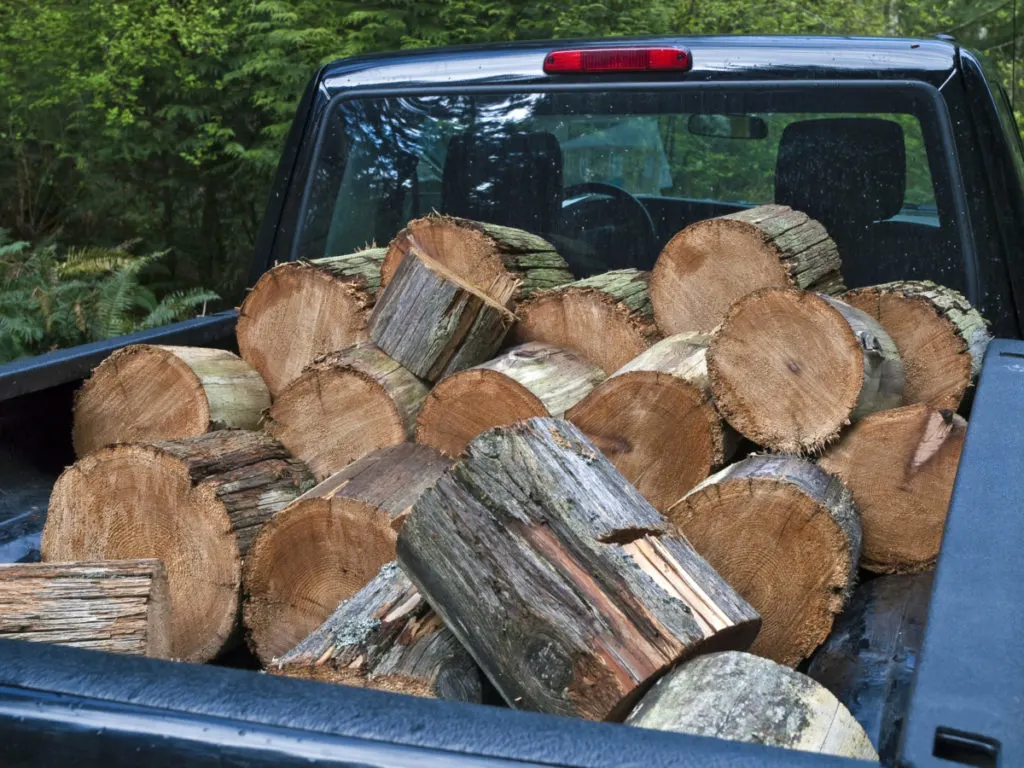
It’s important to ask first though. To put it bluntly, all wood belongs to someone, and it’s important to make sure you know who and ask before you take it.
If you have the skills to drop a tree, then you’re even better situated to find free firewood.
Although, I would caution you about offering to drop trees on someone’s property if you don’t have significant experience doing so. Not only is it dangerous, but you could also end up damaging property and incurring legal fees as a result. Unless you know what you’re doing, it’s best to stick to downed trees.
Make sure you know what wood to burn in your wood stove. And of course you need to know how to season and store freshly cut wood so it burns cleanly and efficiently.
1. Word of Mouth
As I mentioned above, once word gets out that you’re looking for wood, you’ll be surprised at how often it finds you. Spread the word far and wide that you’re the person to call if someone loses a tree in a storm or their elderly relative can’t take care of a dead tree in their yard.
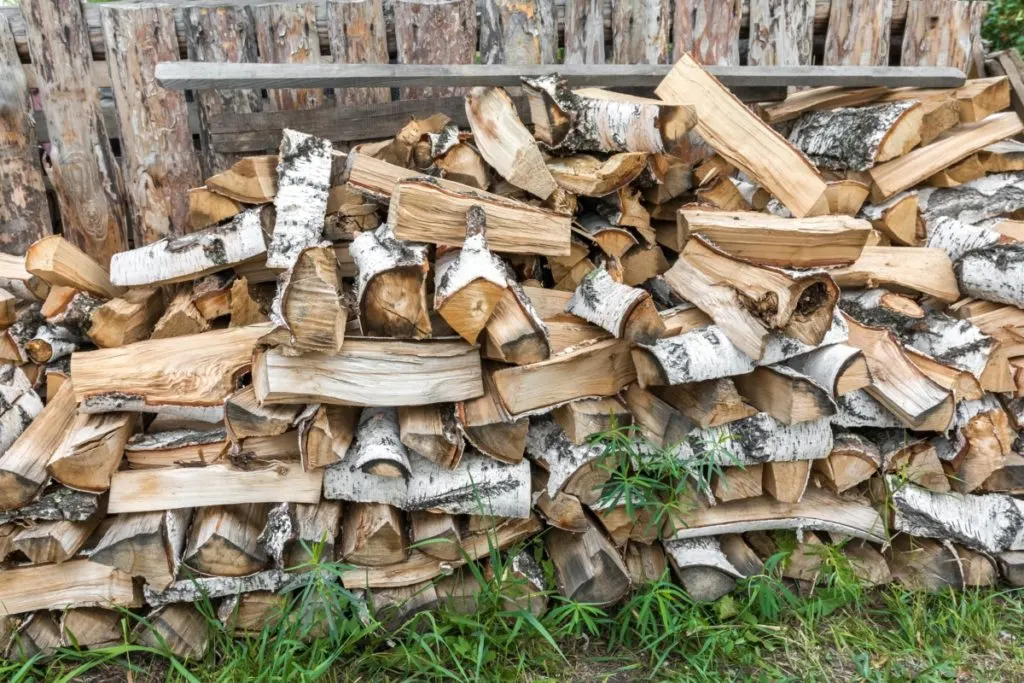
Be courteous, clean up and be quick and before you know it, you’ll have a tidy stack in the backyard ready to go.
2. Facebook Marketplace and Craigslist
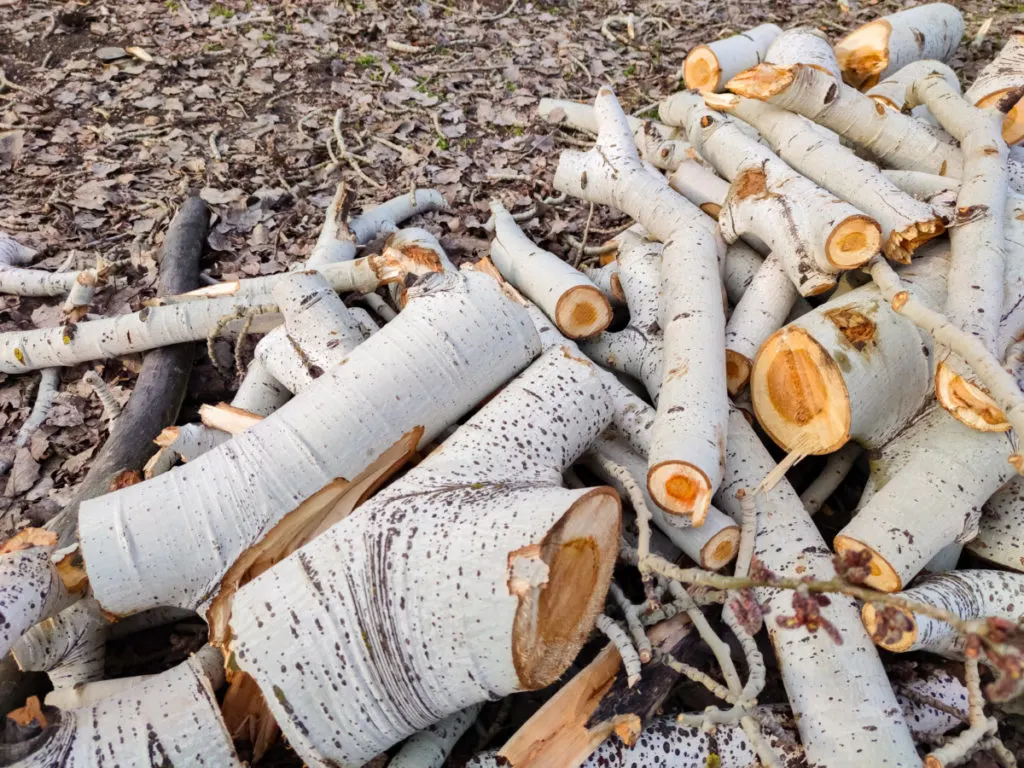
These are two great online resources when it comes to finding firewood. Granted, you’ll see plenty of people selling firewood there too. But you’ll also find people who just want that old dead apple tree in the backyard taken down or the tree that fell in the front yard during last night’s storm cleaned up.
It’s also wise to place your own ad on these sites letting people know you’re willing to remove downed trees or if you know how, fell standing trees and remove them.
3. Storm Clean Up
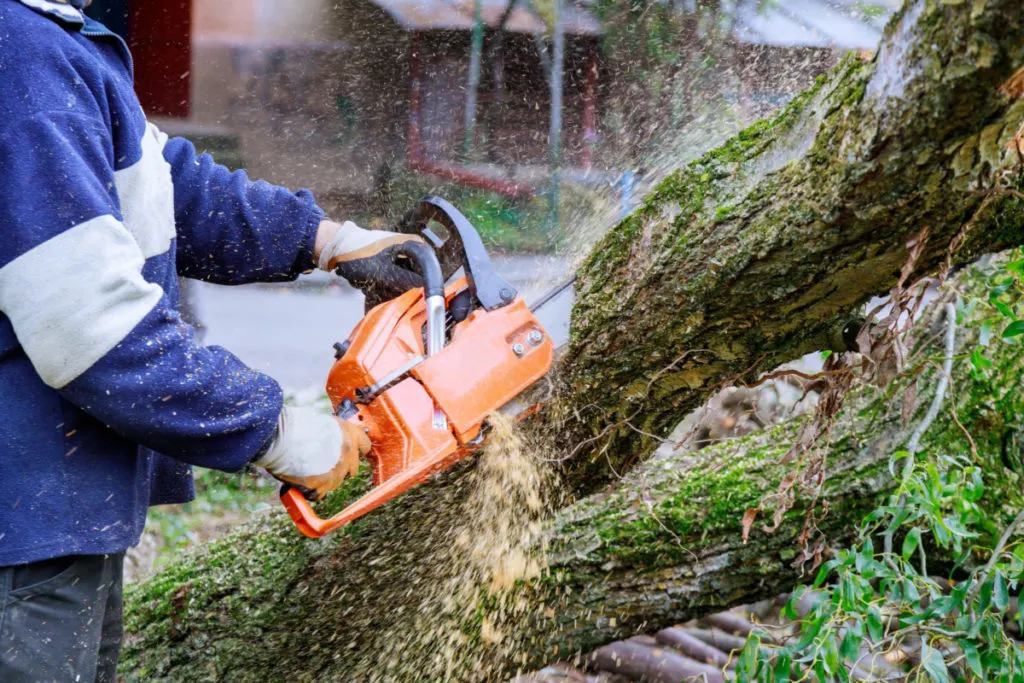
Whenever the weatherman calls for heavy rain, thunderstorms, wind, snow, or ice, get your chainsaw sharpened, oiled and ready to go.
Storm clean-up is a great way to score free firewood, but you need to work quickly. Most townships have crews that head out to remove downed trees from across roads. Call your town supervisor and ask if you can follow behind and pick up logs, or if you can have the logs left behind by these crews on the side of the road.
Knock on doors where you see a downed tree on the property and offer to remove it for free. I used to work at a tree care and landscaping business, and unless the tree had landed on your house or garage, it was likely that it could be a week or two until our crews could get to it. You’ll find plenty of people who are happy to have someone remove their storm damage mess for free.
Of course, never clean up trees that have fallen across power lines; leave those for the power company.
4. Hit Up Friends and Family with Wooded Property

Proper forest management is key to having a healthy forest, and it takes a lot of time. If you’ve got elderly family or friends with a wooded lot, they may be quite happy to have you come in and clear dead or diseased trees for them.
Ask anyone in your family or group of friends with a wooded property if they would like some help maintaining their property in exchange for firewood. Unless they heat with wood too, you’ll most likely get a resounding “Yes, please!”
5. Call a Local Tree Care Company
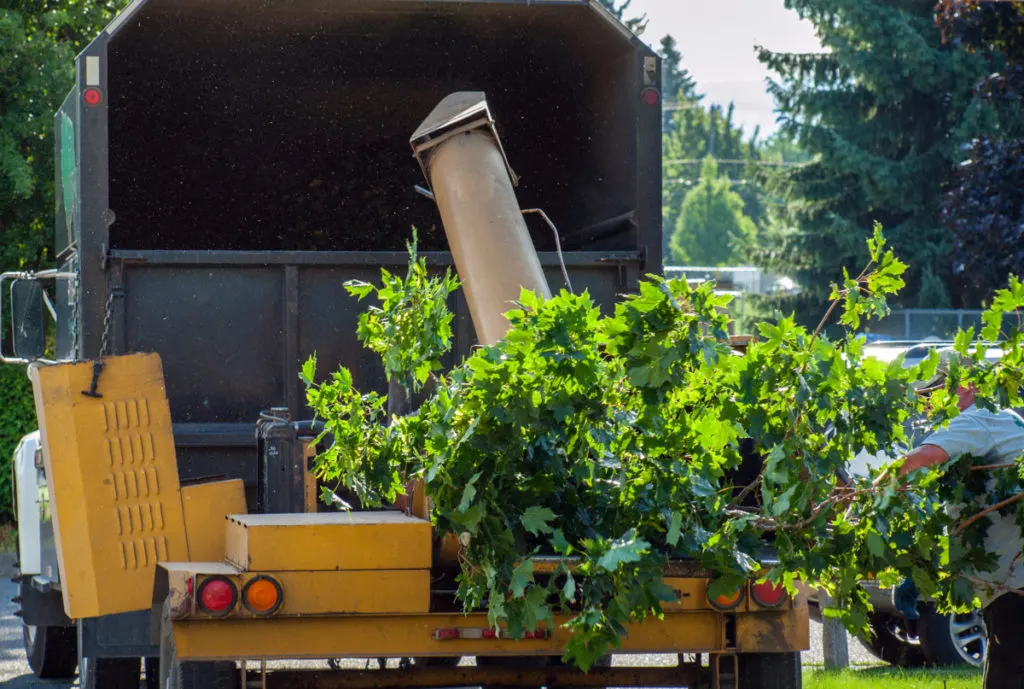
Paying the professionals to come and take down a tree on your property can be expensive. The part of the service that costs the most is clean-up. Many people dealing with a dead or dangerous tree on their property choose just to have it dropped and skip the clean-up to save money.
Call a few local tree care companies and give them your contact information to give to clients who don’t want to pay to have the tree dealt with once it’s down. If you establish a reputation of being easy to work with, you’ll develop a rapport with the experts who will be more likely to pass along your name.
6. New Construction
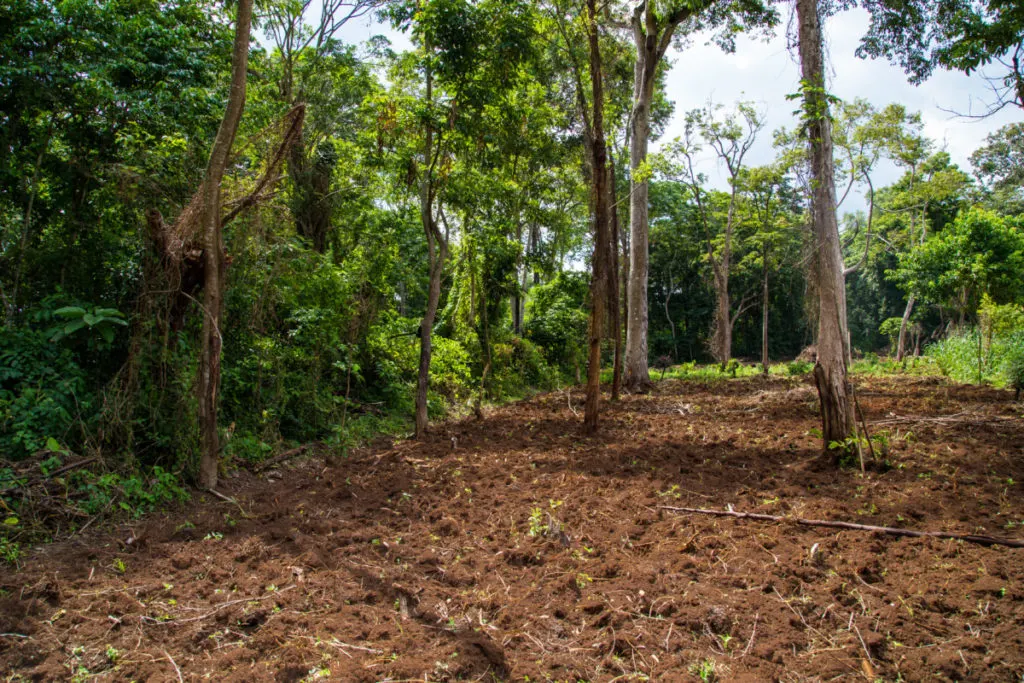
Keep an eye out for SOLD signs on wooded lots or anywhere with new construction. Whenever folks are looking to build in an area with trees, they first need to clear the lot. Rather than paying someone to drop and remove trees, most folks will be quite happy to have someone do it for free in exchange for the wood.
7. Sawmill
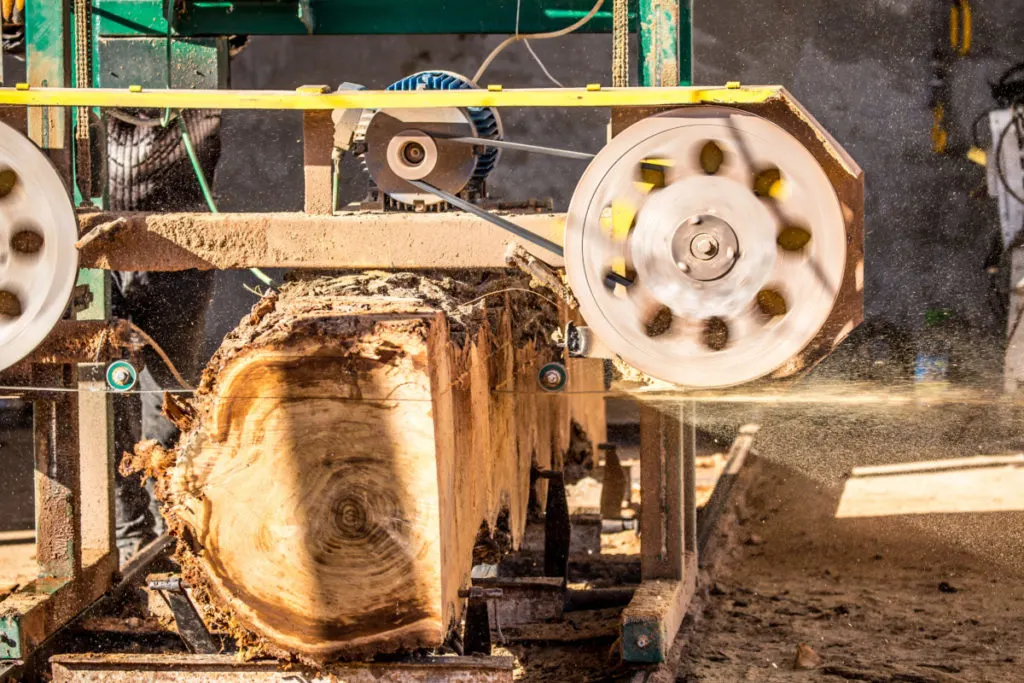
Sawmills are a good place to check for free firewood. Obviously, they will be using the lion’s share; however, not everything that comes to them is usable to make lumber. Most sawmills end up paying to have scrap wood hauled away. Call and ask if you can take some of their scrap wood off of their hands. Again, be courteous and quick, and they’ll be more likely to let you come back again.
8. National and State Forests
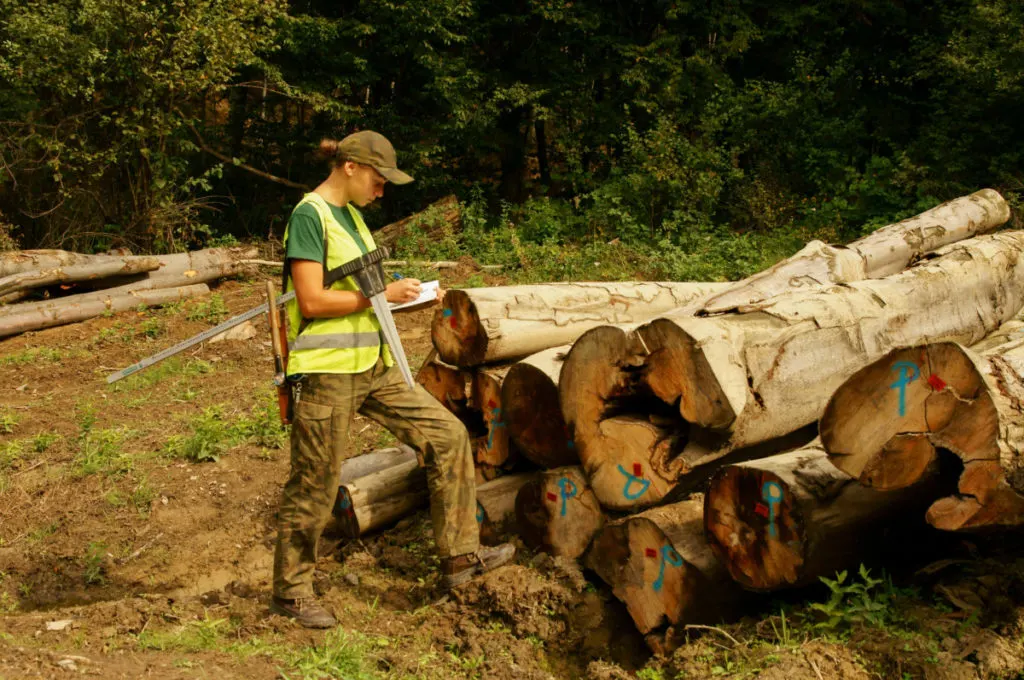
National and state forests often offer permits at low or no cost allowing people to cut firewood. This helps them manage the forests better with their limited staff.
There are often limits on how many cords are allowed and where and what kind of trees you can harvest. But with a few inquiries, this can be a great way to find a large amount of wood rather than collecting a tree or two at a time as the opportunity arises.
For a national forest, you’ll want to contact the supervisor’s office (each forest has one) to get the details and purchase a permit.
For state forests, you’ll want to check your state’s department of nature or environmental conservation for details.
9. ChipDrop
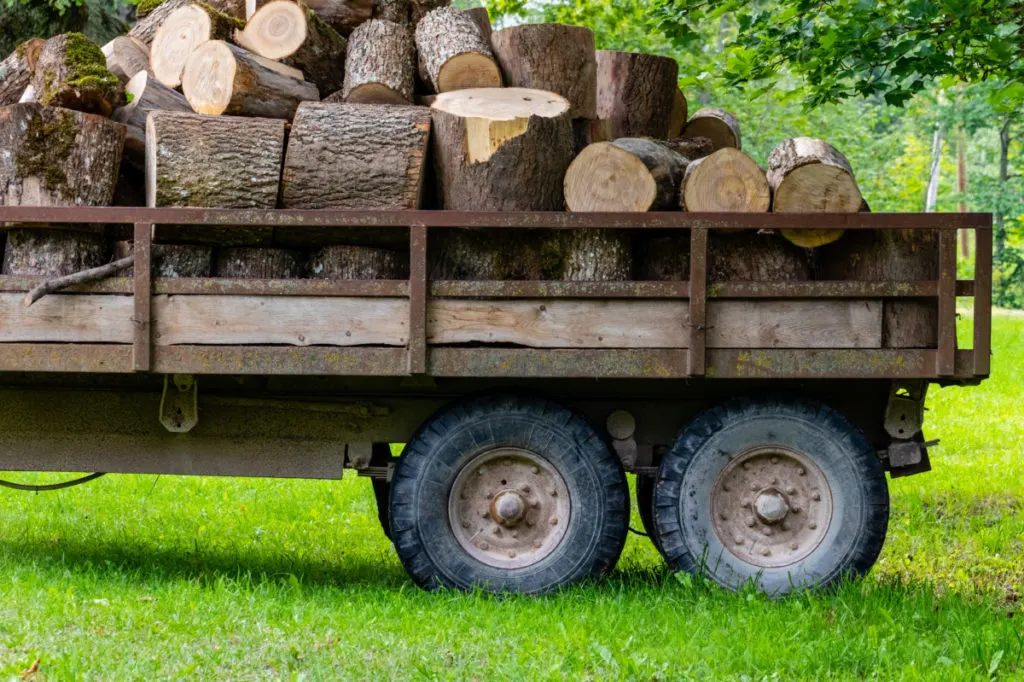
This app allows you to sign up to be put on a list for arborists and other tree care professionals to use your property as a place to drop logs after cleaning up a site. There’s no guarantee you’ll get wood, and it could happen at any time, but if wood is your main source of heat, it’s worth it to sign up.
10. Check with Your Local Municipality

As more invasive insect species cause problems with local trees, more need to be cut down. If you live in an area where lantern flies, ash borers, or other pests are a problem, you may be able to pick up trees locally that have been downed due to disease by the city or town you live in. They may have restrictions on how far you can travel with the wood to prevent the spread of the insect, but this could be a good way to scavenge free wood.
If you’re willing to invest the time and effort, there’s no reason you can’t have next year’s firewood for free. Keep checking these sources, and sooner or later, the firewood will start coming to you. Stay warm!
Now that you’ve got all that free firewood, you’ll want to be sure you’re seasoning it properly.

Get the famous Rural Sprout newsletter delivered to your inbox.
Including Sunday ramblings from our editor, Tracey, as well as “What’s Up Wednesday” our roundup of what’s in season and new article updates and alerts.

